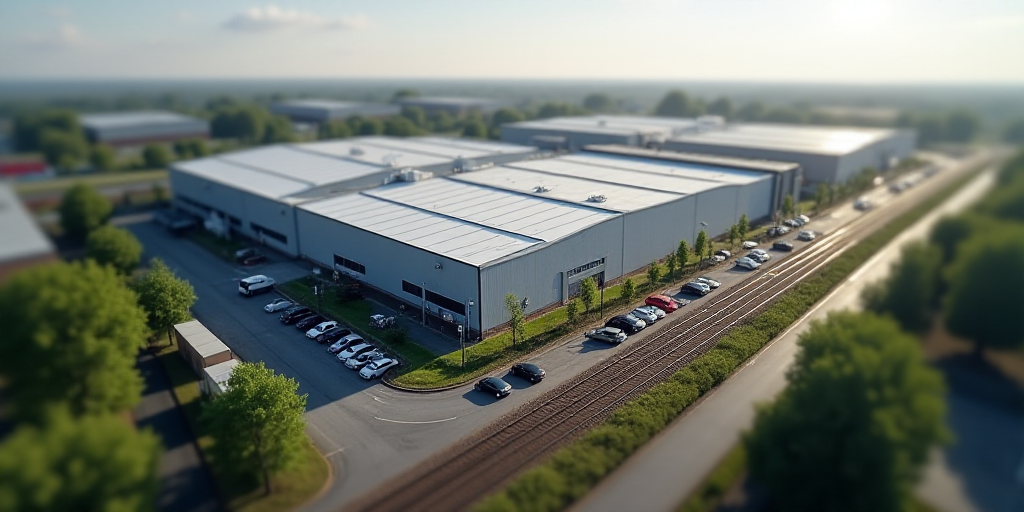Current Market Situation
Tariffs imposed by the United States continue to slow down the occupation of industrial warehouses in Mexico. However, experts predict a gradual recovery by the end of 2025.
According to consulting firm Datoz, 7.5 million square feet of industrial space was occupied during the second quarter of 2025. This is similar to the occupation level seen in the first quarter of the year but represents nearly 50% less compared to the last quarter of 2024.
New Inventory and Occupation Levels
During the same period, 2.5 million square feet of new space entered inventory, adding to the vacancies for a total of 7 million square feet available nationwide.
Expert Insights
Pablo Quezada, Datoz’s General Director, explained that the market is undergoing a natural adjustment due to the complex international economic and political landscape. Developers are adapting their projects because of the oversupply of industrial warehouses.
“The threat of tariffs is a real concern that may continue to hinder some projects as observed since early this year. However, we’ve seen that these are merely threats. Markets no longer react the same way to such announcements. Some projects have been renewed, indicating that many investors see less uncertainty,” Quezada said in a meeting with media.
Market Expectations
Quezada clarified that the contraction in industrial space occupation does not imply a definitive halt to nearshoring (relocation of companies) in Mexico. He believes this trend will continue, possibly bolstered by the US tariff policies.
“This phenomenon will not stop, and it’s likely that a logistics and manufacturing production region will consolidate in America. The US policy is merely accelerating this process, sending a clear signal that they no longer want to rely on China’s imports,” he emphasized.
Quezada highlighted the northeast Mexico region, comprising markets like Monterrey, Matamoros, Saltillo, and Reynosa, as evidence of the real estate recovery. This area holds 30% of the national industrial inventory, and its warehouse occupation increased from 2.3 million to 3 million square feet between the first and second quarters of 2025.
“We won’t see levels as high as the past three years, which were higher than usual. However, 2025 could close well, despite knowing that other factors create uncertainty for investment,” Quezada pointed out.
Regional Recovery
Silvia Gómez, Datoz’s Research Leader, stressed that the industrial real estate sector’s recovery won’t be uniform. Some markets will reactivate faster than others, with Monterrey, Tijuana, Guadalajara, and Querétaro being among the most dynamic.
Gómez also noted that, despite developers’ caution, this period could be crucial for acquiring land at attractive prices for new projects.
“Developers might wait for secondary markets to mature more, especially. These are good options in terms of price. They will aim to have land reserves and be prepared when this development cycle changes,” Gómez concluded.
Key Questions and Answers
- What is the current occupation level of industrial warehouses in Mexico? During Q2 2025, 7.5 million square feet of industrial space was occupied, which is similar to Q1 but represents nearly 50% less than Q4 2024.
- How are tariffs affecting the industrial warehouse market in Mexico? Tariffs imposed by the US continue to slow down occupation, but experts predict a gradual recovery.
- What are the market expectations for nearshoring in Mexico? Despite tariff concerns, the trend of nearshoring is expected to continue and possibly be bolstered by US tariff policies.
- Which regions in Mexico show signs of industrial real estate recovery? The northeast region, including markets like Monterrey, Matamoros, Saltillo, and Reynosa, has shown an increase in warehouse occupation.
- What are the key takeaways regarding the industrial real estate sector’s recovery? The recovery will not be uniform, with some markets reactivating faster than others. Developers might wait for secondary markets to mature before acquiring land for new projects.






